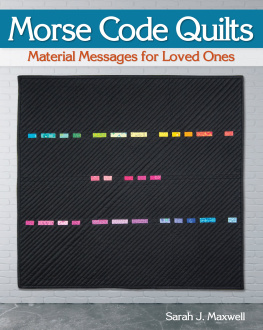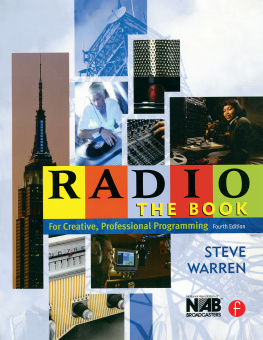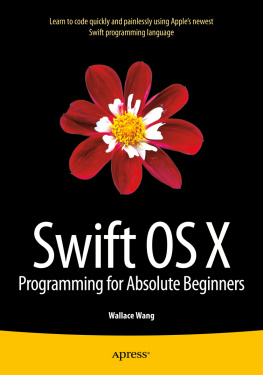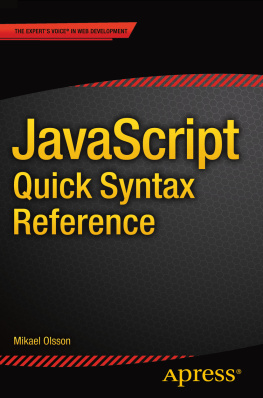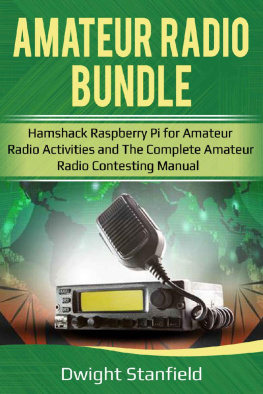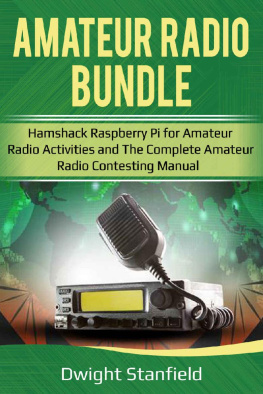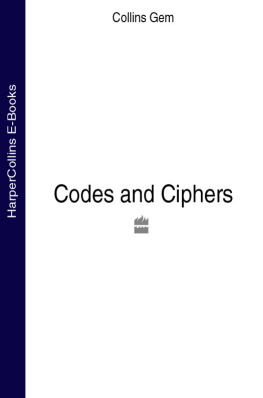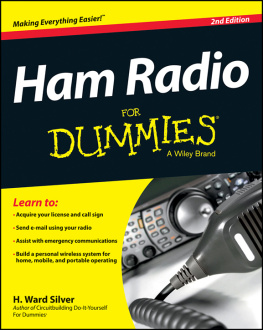The CW Geek's Guide to Having Fun with Morse Code
Dan Romanchik, KB6NU
2015 Daniel M. Romanchik, KB6NU
All rights reserved. No part of this publication may be reproduced, stored in a retrieval system, or transmitted in any form or by any means, electronic, mechanical, recording or otherwise, without the prior written permission of the author.
Version 1.1 3/7/15
Table of Contents
Introduction
I got my Novice license way back in 1971, at the age of 16. Back then, Novices were restricted to operating Morse Code on small portions of 80m, 40m, 15m, and 10m. In addition, you had to upgrade within a year or lose your license. That meant either settling for a Technician Class license, or biting the bullet and passing the 13 word-per-minute (wpm) General Class code test.
Fortunately, I enjoyed operating Morse Code and I was more than ready for the 13 wpm by the time that I'd learned enough theory to pass the written test. I took the bus down to the Federal Building in Detroit, easily passed the code test, and took the written test.
Then, the waiting began. In those days, they didn't tell you right away if you passed the test or not. You had to wait several weeks before you got a letter from the FCC with either your new license or a letter informing you that you didn't pass.
I was pretty confident that I would pass, so I'd purchased and built a Heathkit HW-101. This was one of the least expensive HF transceivers on the market at the time, costing $250 for the kit. It was capable of operating both single-sideband (SSB) phone and CW (Morse Code) on the 80m, 40m, 20m, 15m, and 10m bands. There were no WARC bands in 1972!
Why is it called CW?
Quite often you'll hear the term CW when referring to Morse Code operation. CW is the abbreviation for continuous wave, and refers to the mode of transmission, rather than the type of modulation (Morse Code) used to transmit information. The Random House Dictionary defines the term continuous wave as an electromagnetic wave of constant amplitude and frequency. In a way, calling radiotelegraphy CW is a misnomer because the continuous wave is continually interrupted to form the dits and dahs of Morse Code, but hey, they didn't ask me when they started calling it CW.
So, when my license arrived, I was ready to operate some phone. To be honest, I don't really remember my first phone contact, but after a few SSB contacts (or QSOs), I recall thinking, Is that all there is? The reality of finally being able to talk on the radio certainly did not live up to my expectations. I unplugged the microphone, connected up the key, and got back on Morse Code.
I operated only sporadically through the rest of my high school years and my college years, and after college, I was off the air for many years. About twelve years ago, though, the ham radio bug hit me again.
On Field Day 2001, I wandered over to the local club's operation early Sunday Morning. There were only two guys there, one operating CW on 40m and the other guy eating breakfast. I knew the second guy from the bike club, so we got to talking.
He had been trying to make some contacts on 20m phone, but apparently the band conditions were pretty rough that morning, and he wasn't having much luck. Despite not being on the air for a long time, I suggested we try CW. He said that thought he'd seen a straight key around somewhere, and after digging through a couple of boxes, he actually did find one.
It didn't, of course, take long to find someone calling CQ FD short for CQ Field Day. Both of us were so rusty, though, that it took a couple of tries at copying his call before we both agreed on his call sign. At that point, I said, Go ahead. You can make the first contact. At that, he demurred, and said, No. You go first.
With some hesitation, I tapped out our club call sign and waited. What do you know? He actually came back to us! What a thrill! It wasn't as thrilling as my first Novice contact, but it was pretty close.
We went on to make about a dozen CW contacts that morning, each one as painful, but as thrilling, as the first. Often, we had to listen multiple times to a station to get either the callsign or to be sure of the exchange information. Even so, it was great to be back on the air.
If you've read my blog ( www.kb6nu.com ) or my study guides ( www.kb6nu.com/tech-manual ), you know how badly I've been hooked once again on amateur radio. Since that time, I've made more than 20,000 contactsincluding contest contactsand I'd guess that 95% or more of them have been Morse Code contacts.
Even my e-mail address reflects how I feel about Morse Code. I'm .
I know that Morse Code isn't for everyone. Unlike a lot of old timers (OTs, sometimes called OFs, or old farts), I didn't curse the FCC for eliminating the Morse Code test. I know a lot of good hams that either just aren't interested in Morse Code, or for whatever reason, can't seem to learn it. I think it was a real shame that they were kept out of our hobby.
Having said that, I also think that it's a shame that a lot of hams don't try to learn and use Morse Code because they think that it's an outdated mode or that it will be too hard to learn. It's certainly not outdated, as you can hear any evening on the lower portions of the HF ham bands, and while it can be a challenge to learn, it's not rocket science, either.
If you're thinking about learning Morse Code, I hope this book will give you that final push to do so. If you already know Morse Code, I hope that this book will get you more active on CW. In either case, I hope that this book will help you have more fun with amateur radio.
73,
Dan KB6NU
Learning the code
Of course, before you can make a CW contact, you are going to have to learn to send and receive Morse Code. This may seem like a daunting task, but remember, thousands of amateur radio operators and millions of commercial operators have learned to send and receive Morse Code. Theres no reason you cant learn it, too.
The first step in learning Morse Code is simply to get started. Youll never learn it if you dont start.
If you have a PC, I suggest starting by downloading the G4FON CW Trainer from http://www.g4fon.net. There is no charge for the program. The program teaches Morse Code a character at a time, using what is called the Koch Method. The Koch Method teaches you to recognize characters by sound and not by counting the dots and dashes.
If you dont have a PC, but do have an Apple computer, or a CD player capable of playing MP3 files, you can obtain the K7QO Code Course from FISTS, the International Morse Preservation Society. This course is also free of charge. To get a copy, send $3.50 to FISTS, 478 CR 53 Rogersville, AL 35652-3503.
Is everybody appy?
These days, everyone seems to be using a cellphone or a tablet. You could play the .mp3 files from the K7QO Code Course on your phone or tablet, or you could download an app. I've never used any of the apps that are available today, so I asked my followers on Twitter what they would recommend. Here's what they had to say:
- Matthew Williams @W2MDW
@kb6nu Ham Morse is the most flexible, feature packed. Morse Coach is simple & clean. - David Pechey @KD2BMU
@kb6nu I've been using Koch Trainer - $0.99 and Morse Code Trainer - Free. @W2MDW told me about Learn CW Online, which I really like. - M0TEF - Alistair@M0TEF
@kb6nu I really liked using dah dit on the iPhone for drilling through the alphabet as well as training modes. It has worked for me. - Chris Kelling @n1wko
@kb6nu I'm using "dah dit" - g4tny @classicfibre
@kb6nu I've used 'morse trainer' on iphone with some success curing my rustiness ;)) - Richard Daily@rdaily
@kb6nu Morse-it, Ham Morse, CWSpeed and Codeman are good. Codeman is free. - D. Robinson KK4PWE @DRobinson6268
Next page


